
Centre Equestre de Souillac Horse Riding, Souillac
Open Monday to Saturday all year round this horse riding centre welcomes you for lessons as well as trekking.

© Le Collognes Hotel, Brive-la-Gaillarde
Contemporary class in the heart of the Limousin region
Located in the centre of Brive-le-Gaillarde between the Georges Brassens market and the main shopping street, Le Collonges is perfectly. It has a truly modern and unique style, with clean colours and dashes of intrigue throughout, including the pale stone walls from the original building.
Each morning a continental breakfast is on offer and can be enjoyed in the privacy of your own room, with other guests in the dining area or out on the terrace in the sun.
A total of 24 rooms adorn the hotel and each is well equipped with a number of modern day appliances, including a flat screen satellite TV, air-conditioning and a telephone.
There is also a large seminar room of which can accommodate up to 20 people for meetings or exhibitions. Once finished there, a drink can be relished in the hotels bar.
All children are welcome. Those under 8 may stay for free when using an existing bed or cot.

Open Monday to Saturday all year round this horse riding centre welcomes you for lessons as well as trekking.
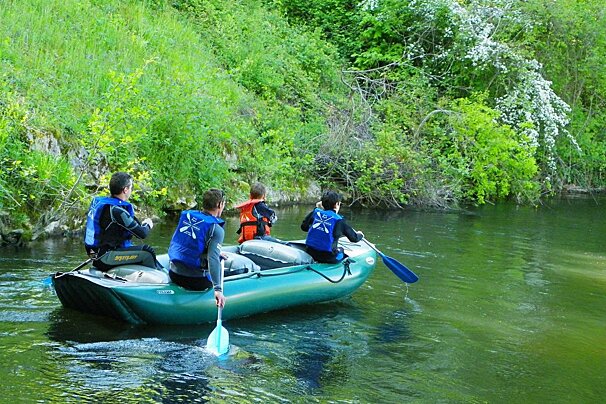
Situated at the foot of Carennac village this watersports centre offers more than just fun on the water! They offer three main activities; canoeing or kayaking, group canoeing with up to six people in the same boat, and adventure trekking with overnight camping out in the wild.

Shortly before sunset, or at dawn, following the preparation of the flight you can take off with Lionel, a professional balloonist and paraglider who has been working as a guide in Dordogne for more than 15 years.
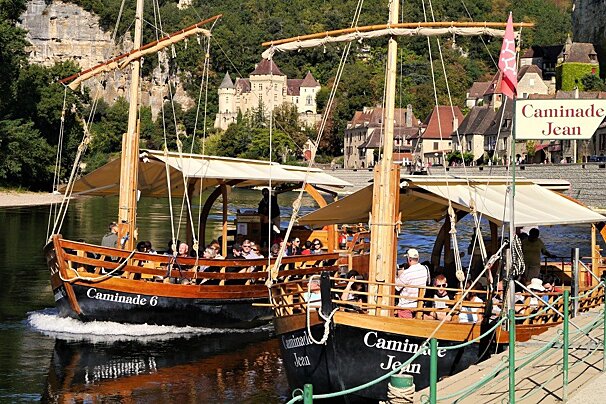
Travel along the valley of the five chateaux on traditional barges and discover some of the most beautiful sites.

This wildlife park is dedicated to the Barbary Macaque monkey who roams free in the 20 hectares of woodland.

Nestled in the heart of the Quercy region at the very top of the town of Rocamadour this park allows you the chance to meet some wonderful birds.

This elegant and sophisticated two Michelin star restaurant offers creative dishes designed by chef Cédric Béchade, who plays with colours and textures in his cuisine.

The dining rooms allow for views of the surrounding vineyards and rolling hills. Drinks can also be enjoyed in the small library or among the chestnut trees.
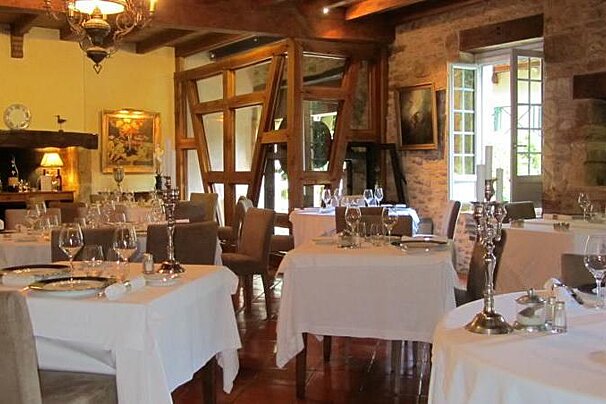
A bright restaurant with stone walls, old wooden beams, fireplace and inviting allure, offer up culinary delights from the region. A strong focus is on local local treats and seasonality.

Chez Alain is located in the beautiful medieval village of Issigeac, known for its colourful market on Sunday. The chef, Sébastien, offers a refined and colourful cuisine using fresh and seasonal produce. The stone walls and old beams give off a warm atmosphere inside and it has a pretty outdoor area.
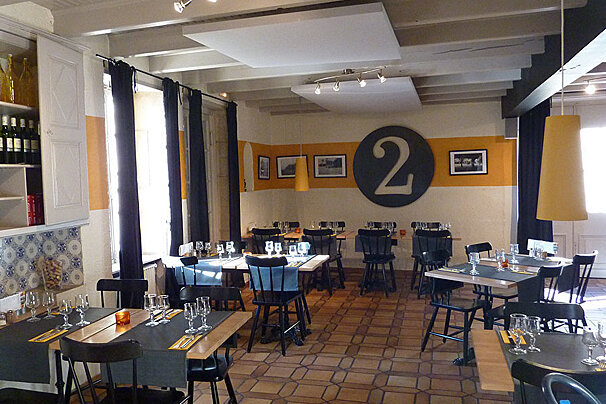
In conjunction with the Hôtel Edward 1er, you would expect the restaurant to maintain the high standards and quality that the hotel upholds. That it certainly does, with twists on French classics in a spacious and friendly dining area, set inside an historical stone building, typical of the Monpazier village and surrounding region.

Converted mill located in a small village typical of the area. Set on the banks of the Aveyron, sit back and watch the heron fish whilst you enjoy your meal.
Housed in the Hôtel de Labenche, a Renaissance building from the 16th century, this museum traces the archaeological history of the city from prehistoric to the middle ages. It has a large collection of finds and includes the oldest preserved Eucharistic dove in Europe which dates to the 11th century. Coming to more recent history, it has collections representing the cultural development of the city and a collection of English Mortlake tapestries from the 17th century.
This museum in the centre of Brive covers the Second World War and the Resistance. It is housed in the former home of Edmond Michelet, a key resistor who was arrested by the Germans in 1943 and sent to the concentration camp at Dachau. He survived and returned to France in 1945 and went on to become Minister for the Armed Forces under the de Gaulle government. His studies on the Resistance won him literary prizes and his home has become a study centre as well as a museum. Many of the museum's collections were gifts from former resistance fighters and it houses an exceptional collection of over 400 propaganda posters.
This is a contemporary floral park in the town of Varetz created in 2008 to pay tribute to the author Sidonie-Gabrielle Colette. The park has a guided tour offering a fun way to discover the botanical interests of this author as you wander through its six gardens.
Designed by Kathryn Gustafson, a visit here tells a story, and is a journey through the gardens of history. The guided tour is excellent, describing ancient woods believed to have been inhabited by gods, more contemporary water features and a garden of over 2,000 roses which blends the old with the new.
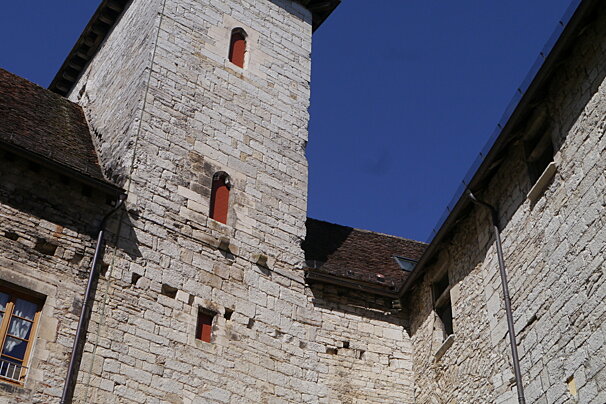
The Palais de la Raymondie stands next to the market hall in the heart of the medieval town of Martel. This museum contains objects dating from paleolothic, neolithic and Gallo-Roman occupations.
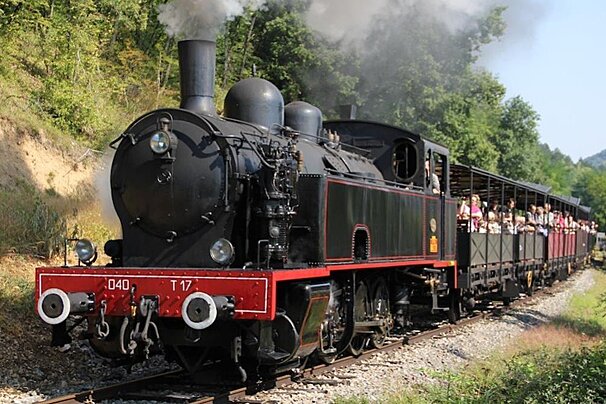
Also known as the Truffle train, it will take you on a journey of 8 miles (13 Km) round trip, more than 80 meters (260 feet) high cliff, giving a wonderful panorama of the Dordogne Valley.
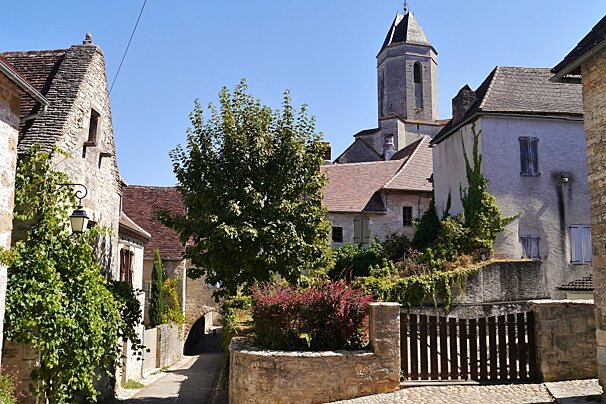
The town of Martel is not, in fact, famous for the brandy (that's Martell with two ll's) but is well known as the capital of truffles and a great producer of walnuts, two of the region's specialities.

A base for exploring the region, Souillac has a medieval past and is filled with Romanesque-style sculptures.

Carennac has been previously voted 'One of the 'Most Beautiful Villages in France' and it's easy to see why. The blonde stone and red-brown roofs of its buildings have tall chimneys and are adorned with creepers that turn red in the autumn.

This medieval town on a bend in the Dordogne grew around its 9th century Benedictine abbey of Saint-Pierre.

The pretty old town of Montignac serves as a good base for visiting the nearby prehistoric caves.

Standing out as one of the most charming towns in the region, this medieval dwelling remains much as it was when it was built in the 14th century.